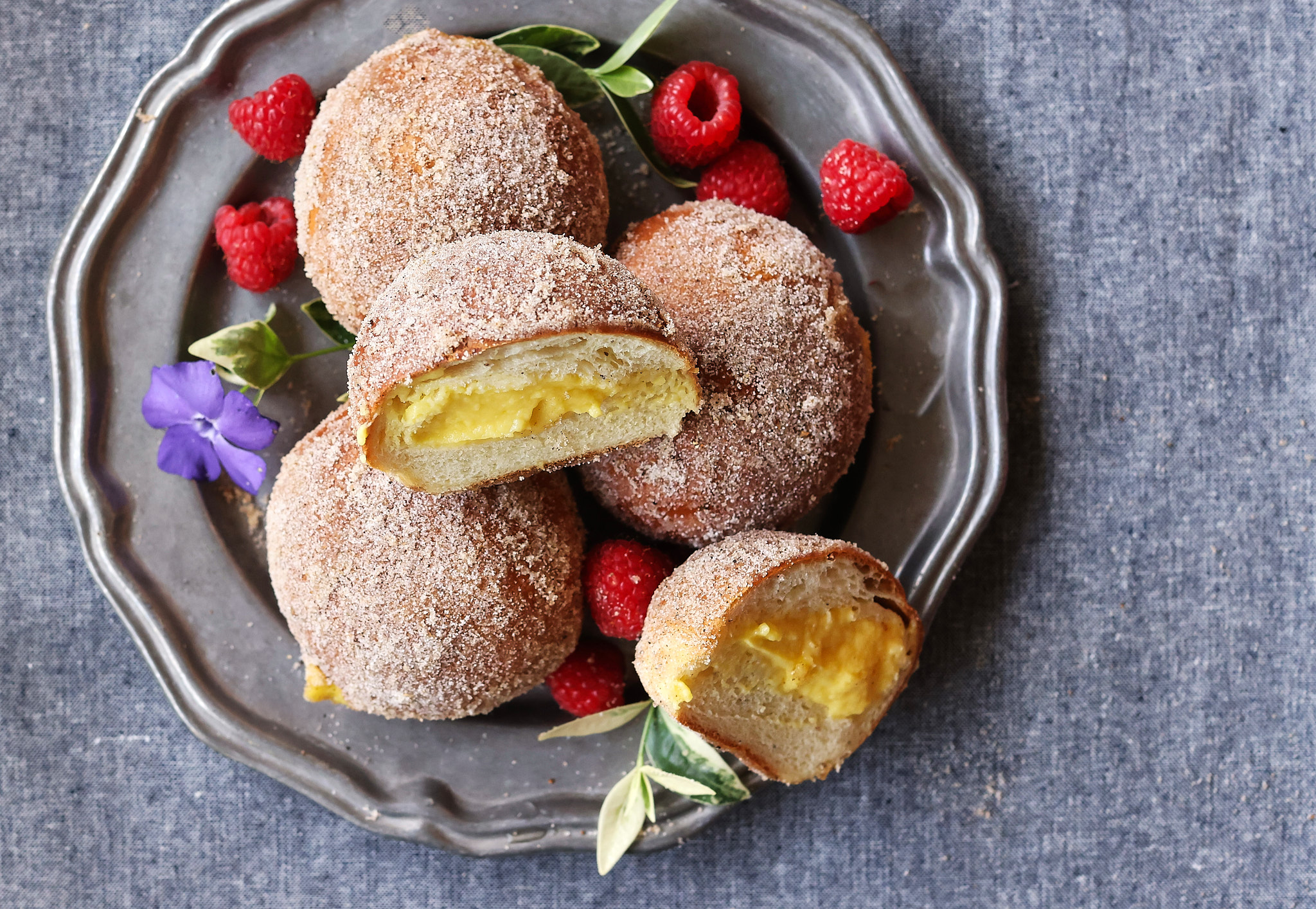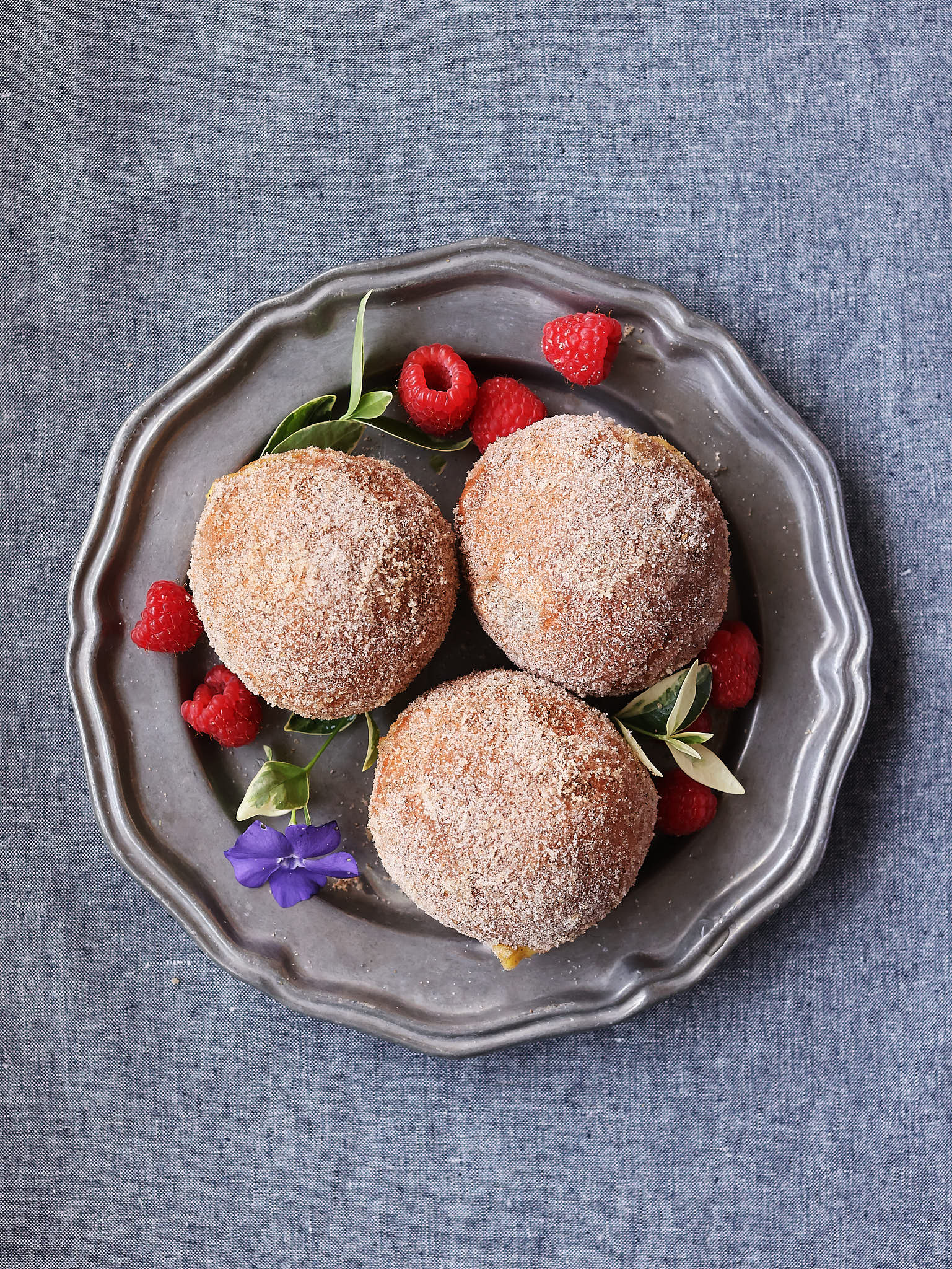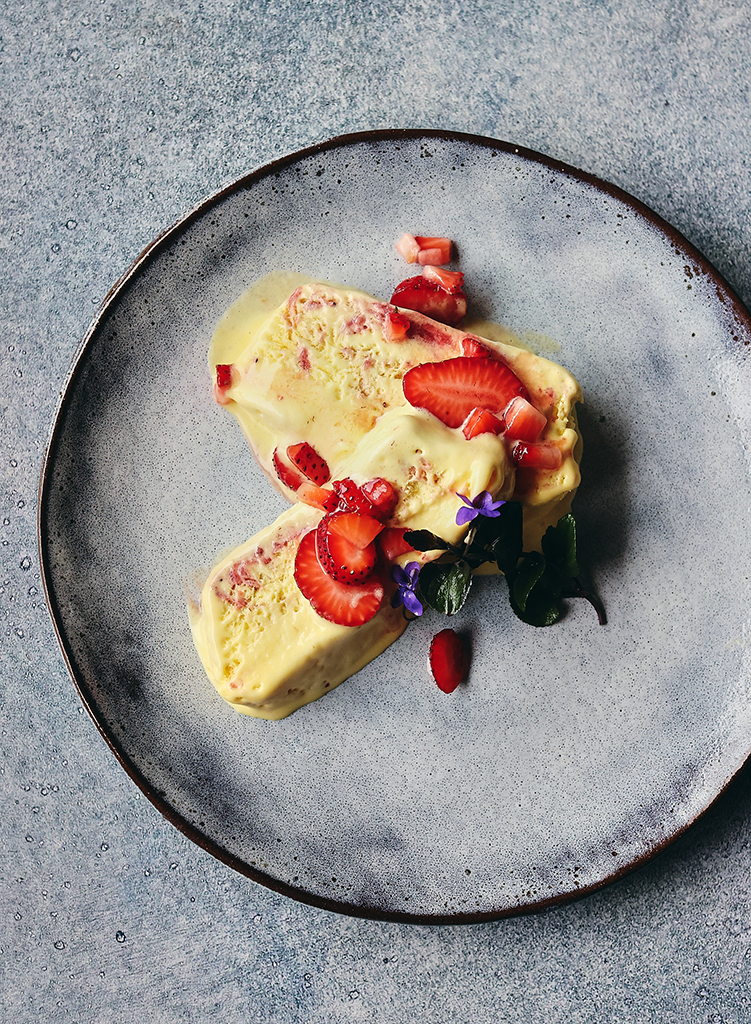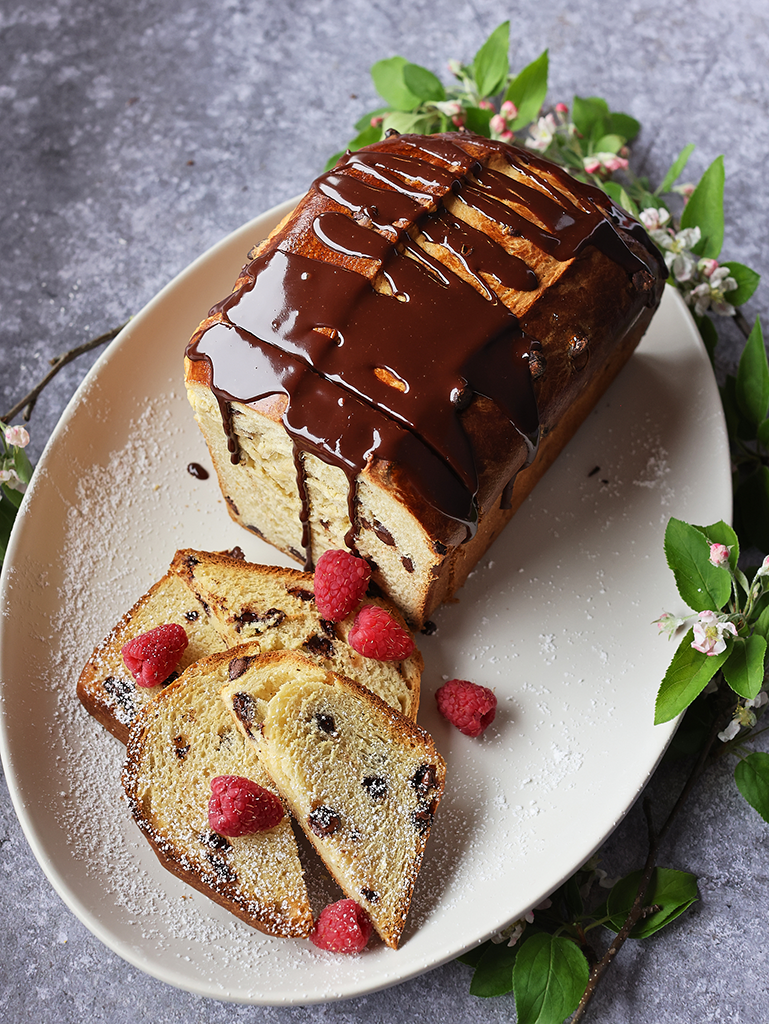
I met Marion Cunningham, one of America’s most famous and enthusiastic advocates of home cooking, at a conference in Seattle. We talked brioche and filled doughnuts, and later she mailed me the recipe for her Dewy Buns, cloud-soft brioche rolls filled with pastry cream. Using her recipe as inspiration, I add freshly ground cardamom to the dough and the sugar coating. You can use ground cardamom from your pantry, but grinding whole cardamom seeds in a coffee mill or spice grinder will give you the brightest flavor.

Printable PDF here
Makes 12 buns

DOUGH
Neutral oil (canola or sunflower), for greasing the bowl
1/4 cup water
3/4 cup whole milk
6 Tbsp unsalted butter, divided
2 tsp active dry yeast
2 Tbsp granulated sugar
1 egg
1 tsp ground cardamom (freshly ground if possible)
21/4 cups plus 2 Tbsp unbleached all-purpose flour
11/4 tsp kosher salt
PASTRY CREAM
1/2 cup granulated sugar
2 Tbsp cornstarch
1/2 tsp kosher salt
4 egg yolks
1 tsp vanilla extract
11/2 cups whole milk
CARDAMOM–CINNAMON SUGAR
1/2 cup granulated sugar
2 tsp ground cardamom
1/2 tsp ground cinnamon

DOUGH
Brush a medium bowl with a neutral oil and line a rimmed baking sheet with parchment paper.
Warm the water, milk, and 3 Tbsp butter in a small saucepan just until the butter melts. Pour into a stand mixer bowl fitted with the paddle attachment and let cool until warm to the touch. Sprinkle in the yeast and mix on slow speed to combine.
Add the sugar and egg and mix for 1 minute, then add the cardamom, flour, and salt. Mix on low for 3 minutes to bring the dough together, then switch to the dough hook and knead at medium speed for 4 minutes. The dough will feel slightly tacky.
Scrape the dough into the oiled bowl, cover, and let proof until doubled in size, about 2 ½ hours.
PASTRY CREAM
While the dough rises, prepare the pastry cream. In a medium bowl, whisk the sugar, cornstarch, salt, yolks, and vanilla extract until smooth. In a medium saucepan, heat the milk over medium heat until it just begins to boil. Turn off the heat. Slowly whisk one ladleful of the hot milk into the yolk mixture. Repeat this process twice more. Then pour the tempered mixture back into the saucepan and cook over medium heat, whisking constantly, for 2–3 minutes, until the mixture thickens to a custard-like consistency. Transfer to a clean bowl, press plastic wrap directly on the surface, and refrigerate for 2 hours.
CARDAMOM–CINNAMON SUGAR
Stir together the sugar, cardamom, and cinnamon in a small bowl and set aside.
When the dough has doubled in size, turn it onto a lightly floured work surface. Flatten it slightly, making a 4 x 12-inch rectangle. Using a 2-inch diameter glass cup or metal biscuit cutter, cut twelve circles and arrange them 1 inch apart on the prepared sheet. Cover loosely with plastic and let rise for another 1 ½ hours.
Heat the oven to 425°F. Bake the buns for 15 to 18 minutes, rotating the sheet halfway, until tops and bottoms are golden. Cool on a baking rack for 20 minutes.
Smooth the chilled pastry cream with a spatula, then load it into a pastry bag with a round hole tip. (If it’s easier, or you have a small pastry bag, load half at a time.) Make a small hole in the sides of the buns, and pipe pastry cream into each bun. The buns will rise slightly when filled.
Melt the remaining 3 Tbsp butter. Brush the tops and bottoms of the buns with butter and roll them in the cardamom–cinnamon sugar.
Enjoy them with your favorite hot tea or cup of coffee.




















